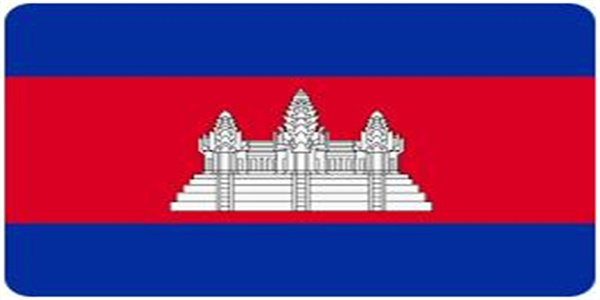





 " />
" />【 WeChat QR code consultation 】
13698775878

The trough cable tray is a trough component made of a whole steel plate. The difference between it and the tray rack is that the height and width ratio are different. The tray rack is shallow and wide, while the trough cable tray has a certain depth and closure.
Cable tray (cable tray) is the full name of a rigid structural system with close support cables composed of straight sections, bends, components, brackets (arm brackets), hangers, etc. of trays or ladders.
Trough cable trays can be used for fully enclosed cable laying. It is most suitable for laying computer cables, communication cables, thermocouple cables and other control cables of highly sensitive systems. It has a good effect on shielding interference of control cables and protection of cables in heavy corrosion environments.
Selection points
1) Trough cable trays and their supports and hangers should be used in corrosive environments. They should be made of corrosion-resistant rigid materials or anti-corrosion treatment should be adopted. The anti-corrosion treatment method should meet the requirements of engineering environment and durability.
2) In the section with fire protection requirements, the cable bridge can add fire-resistant or flame-retardant plates, nets and other materials in the cable ladder and tray to form a closed or semi-closed structure, and take measures such as applying fire-resistant coating on the surface of the bridge and its support and hanger. Its overall fire resistance should meet the requirements of relevant national specifications or standards.
3) Aluminum alloy cable bridges should not be used in places with high engineering fire protection requirements.
4) The selection of the width and height of the trough cable bridge should meet the requirements of the filling rate. Under normal circumstances, the filling rate of the cable ladder and tray can be 40% to 50% for power cables and 50% to 70% for control cables, and 10% to 25% engineering development margin should be reserved.
5) When selecting the load level of the cable bridge, the working uniform load of the cable bridge should not be greater than the rated uniform load of the selected cable bridge load level. If the actual span of the cable bridge support and hanger is not equal to 2m, the working uniform load should meet the requirements.
6) The specifications and dimensions of various components and supports should match the straight sections and bend series of trays and ladder racks under the condition of meeting the corresponding load.
7) When selecting the bend or up-lead and down-lead device of the trough cable tray, it should not be less than the minimum allowable bending radius of the cable in the cable tray.
8) For steel cable trays with a span greater than 6m and aluminum alloy cable trays with a span greater than 2m or a load requirement greater than load grade D, the strength, stiffness and stability should be calculated or tested according to engineering conditions.
9) When several groups of cable trays are laid in parallel at the same height, the maintenance and inspection distance between adjacent cable trays should be considered.
12) The standard length of a straight single piece of trough cable tray can be 2, 3, 4, or 6m.
Installation points
1. The laying direction of the trough cable tray should be short and should be laid along the wall, column or beam as much as possible.
2. According to the laying direction of the trough cable tray, the location and load of the embedded steel plate required for the reserved wall holes, floor holes and hanger installation should be proposed to the civil engineering and structural professionals. And it should be coordinated with the process, plumbing and power professionals.
3. When designing the concealed metal cable tray wiring in the ground, close cooperation should be made with the civil engineering professionals so that the line path and equipment selection can be reasonably determined according to different structural types and building layouts.
4. Cables of different voltages and different uses should not be laid in the same layer of cable tray:
(1) Cables above 1kV and 1kV and below;
(2) Double-circuit cables that supply power to the primary load along the same path;
(3) Cables for emergency lighting and other lighting;
(4) Power, control and telecommunication cables. If cables of different grades are laid in the same cable tray, partitions should be added in the middle to isolate them.
5. When no additional concentrated load is required for installation or maintenance under engineering conditions, the working uniformly distributed load of the trough cable tray is calculated based on the uniform distribution of the cable deadweight.
6. Trough-type cable trays should not be laid parallel to the following pipelines. When this cannot be avoided, the location of the cable trays should comply with the following regulations, or appropriate protective measures should be taken.
(1) Trough-type cable trays should be above pipelines with corrosive liquids.
(2) Trough-type cable trays should be below thermal pipelines.
(3) When flammable and explosive gases are heavier than air, trough-type cable trays should be above the pipelines.
(4) When flammable and explosive gases are lighter than air, trough-type cable trays should be below the pipelines.
7. The minimum distance between trough-type cable trays and pipelines should comply with regulations.
8. The necessary distance should be maintained between the integrated wiring cables and nearby electrical equipment such as motors and power transformers that may generate high-level electromagnetic interference.
9. The distance between the integrated wiring cables, optical cables and pipelines laid on the wall and other pipelines should comply with regulations.
10. When trough-type cable trays are laid horizontally, the optimal span should be selected according to the load curve for support. The span is generally 1.5 to 3.0 m. When the cable tray is laid vertically, the part below 1.8m should be protected by a metal cover, except when it is laid in an electrical installation room.
11. When the cable tray is laid in multiple layers, the distance between layers is generally:
(1) The top plate or other obstacles on the cable tray should not be less than 0.3m.
(2) The distance between power cable trays should not be less than 0.3m.
(3) The distance between control cable trays should not be less than 0.2m
Company Address: No. 15A-06, Fukangcheng Economic Development Center Headquarters Building, No. 206 Longhui Road, Kunming Economic Development Zone, Yunnan Pilot Free Trade Zone
Mobile number:+86 13698775878
e-mail address: 339256382@qq.com
